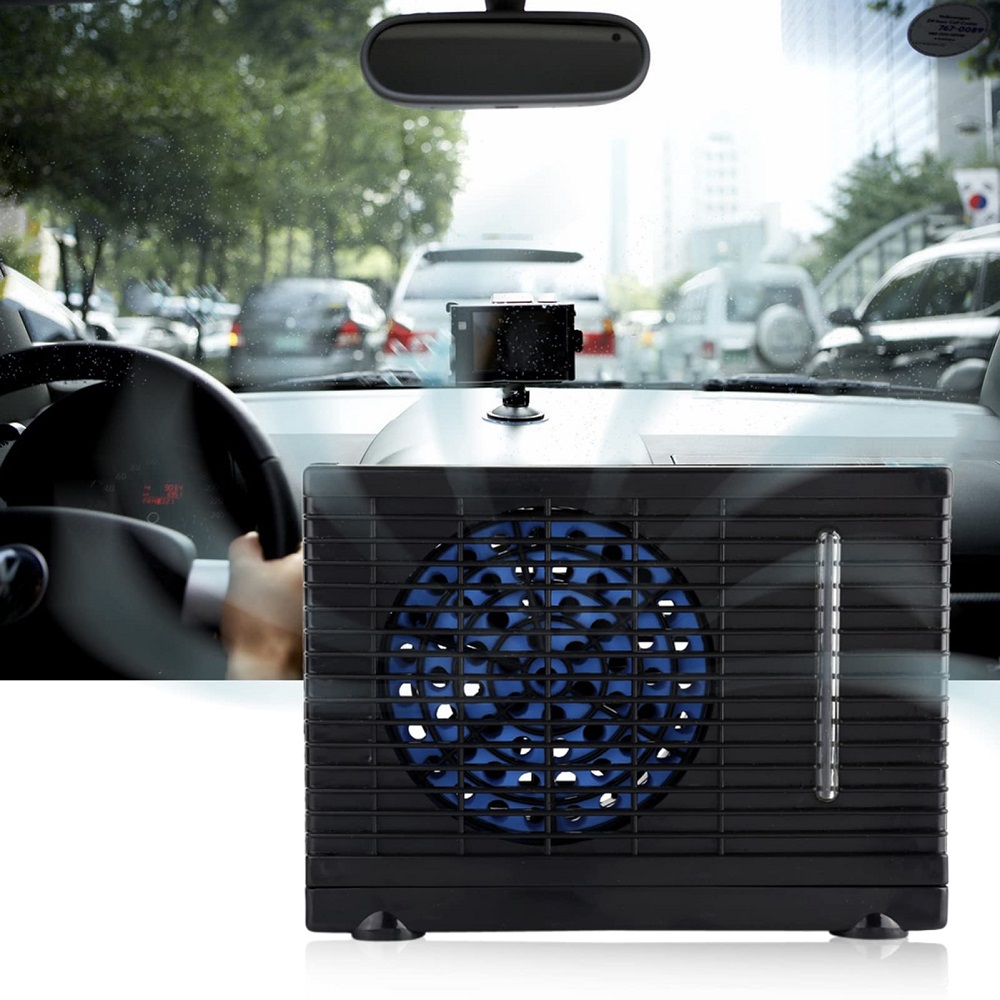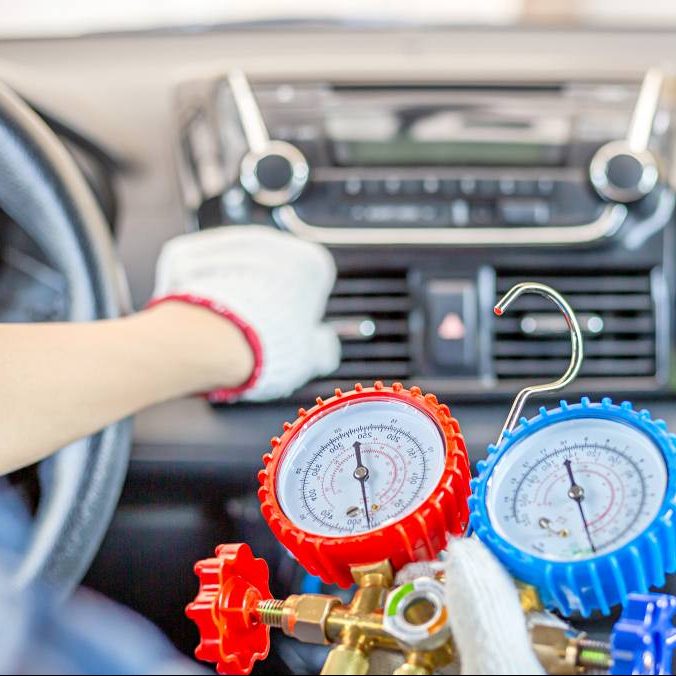Summer is upon us, and with it comes the sweltering heat that makes a functioning car air conditioning (AC) system essential. While some car owners may feel tempted to tackle AC issues themselves, there are situations where DIY fixes are appropriate and others that call for professional help. Understanding the common problems associated with car AC systems, along with the skills and tools required for repairs, can help you make informed decisions. In this article, we will explore when to handle car AC repair yourself and when to seek the expertise of a professional mechanic.
Understanding Your Car’s AC System
The Basics of Car AC Systems
A car’s air conditioning system is designed to cool and dehumidify the air inside the vehicle. It consists of multiple components that work together to provide a comfortable driving experience. The primary parts include the compressor, condenser, evaporator, expansion valve, and refrigerant.
When you turn on the AC, the compressor pressurizes the refrigerant and sends it to the condenser, which cools it down. The cooled refrigerant then travels to the evaporator, where it absorbs heat from the cabin air, cooling it before releasing it back into the vehicle. If any component of this system fails, the AC will not function correctly.
Recognizing Common Symptoms
Understanding common symptoms of AC problems can help you determine when repairs are necessary. Some of the most common signs of an AC issue include weak airflow, strange noises, unusual odors, and inconsistent cooling. If the air coming from the vents feels warm instead of cool, it signals a problem with the AC system. Additionally, if you notice fluid leaking beneath your vehicle, it could indicate a refrigerant leak or other related issues.
Monitoring these symptoms will give you a clear indication of whether to attempt a DIY fix or consult a professional. Recognizing potential problems early can prevent further damage to the system, ultimately saving you time and money in repairs.

Basic Troubleshooting Steps
Check the Easy Fixes
Before diving into complex repairs, it’s essential to perform basic troubleshooting. Start by checking the AC settings and ensuring that the system is set to the appropriate temperature and fan speed. Sometimes simple user error can be the culprit behind AC issues.
Next, inspect the cabin air filter. A clogged air filter can restrict airflow, leading to a reduction in cooling efficiency. If the filter is dirty, replace it with a new one. This is a relatively easy DIY task that can be completed in minutes and can significantly improve air quality within the vehicle.
Inspect for Leaks
Refrigerant leaks are a common cause of AC problems. If you have noticed any oily spots or fluid pooling under your vehicle, inspect the AC components for visible leaks. Pay close attention to connections, hoses, and seals where leaks may occur. A spray bottle filled with soapy water can help reveal leaks. If you notice bubbles forming where you suspect a leak, that is a clear sign that it needs to be repaired.
For minor leaks, your vehicle may be able to use a refrigerant sealant. You can use these products to temporarily stop leaks, allowing you to continue using your AC until a professional can resolve the issue. However, you should only use this as a stopgap measure, and further inspection is recommended.

Tools and Skills for DIY Repairs
Basic Tools Needed
If you decide to take on car AC repair yourself, having the right tools is crucial. Common tools include screwdrivers, pliers, wrenches, and a refrigerant gauge set. These tools will help you access various components and diagnose issues effectively.
Additionally, safety goggles and gloves are essential for protection while working on the AC system. Refrigerants can be hazardous if inhaled or if they come into contact with skin. Being equipped with the right tools and safety gear will make the process smoother and safer.
Understanding the Repairs
Having the right tools is only part of the equation; you also need to understand the repairs you plan to perform. While minor repairs like changing the cabin filter or recharging the refrigerant can be manageable, more complex issues often require knowledge of the AC system’s components.
For example, replacing the compressor or evaporator typically requires technical experience and an understanding of the vehicle’s specific AC configuration. If you feel uncertain about how to proceed, it is better to consult repair manuals or online resources specific to your vehicle before getting started. Attempting repairs without adequate knowledge can lead to further complications.

When to Call a Professional
Complex Repairs
While some tasks are suitable for DIY enthusiasts, certain situations call for professional expertise. If you are dealing with complex repairs, such as compressor replacement, evaporator issues, or electrical problems within the AC system, it is wise to enlist the help of a trained technician.
Technical repairs often require diagnostic equipment that the average car owner does not possess. Mechanics have access to specialized tools that can pinpoint the exact causes of AC issues. They also possess the knowledge necessary to ensure complex repairs are executed correctly and safely.
Warranty and Insurance Considerations
If your vehicle is under warranty, unauthorized repairs can void it. Many warranties cover car AC repair, so it is advisable to check the terms before attempting any DIY fixes. Likewise, if you have car insurance that covers breakdowns or repairs, contacting your insurer can help you determine the best course of action. This can result in professional repairs without the associated out-of-pocket expenses.
Ensuring that you are protecting your warranty and insurance coverage is critical. Calling a professional may be the safest choice in preserving your vehicle’s current protections.

Cost Considerations
DIY vs. Professional Repairs
Deciding between DIY and professional repairs often comes down to cost. While DIY repairs may save you money, they can also lead to additional expenses if not executed correctly. For instance, if you attempt to recharge the refrigerant improperly, you may create further issues and incur higher costs for a professional to rectify them.
On the other hand, you may find that professional repairs seem more expensive upfront, but they provide peace of mind knowing that a qualified mechanic has done the job right. A qualified mechanic can accurately diagnose issues and offer lasting solutions, potentially saving you from repeated visits for the same problem.
Getting Estimates
If you opt to go with a professional, it’s wise to obtain multiple estimates before committing to any service. This will allow you to compare prices and choose the most fair and reliable option. When receiving estimates, ensure they include a detailed breakdown of labor costs, parts, and any other fees associated with the repair.
Understanding the cost structure will give you a clearer picture of whether the service is reasonable. Do not shy away from asking questions if something is unclear or seems excessive; transparency is key in maintaining a trustworthy relationship with your mechanic.
Preventative Maintenance Tips
Regular Checks and Maintenance
The best way to avoid major AC issues is through regular maintenance and checks. Schedule routine inspections to ensure that all components are functioning properly. Mechanics can assess airflow, check refrigerant levels, and inspect for any potential leaks or wear on parts.
Additionally, monitoring your vehicle’s performance can help you detect issues early. Pay attention to changes in cooling effectiveness or unusual noises when the AC is running. Catching these signs early can save you time and money in the long run.
Keep the System Clean
Keeping the AC system clean is also crucial for effective operation. Regularly replacing the cabin air filter will enhance air quality while ensuring optimal airflow. Consider also having the condenser inspected and cleaned, especially if dirt or debris is present.
Cleaning the outside of your vehicle and ensuring that the AC vents are clear of obstructions will facilitate better performance. This diligence can prolong the life of your air conditioning system and enhance your driving experience.
Final Thoughts
Weighing Your Options
Choosing between DIY and professional car AC repair is a decision that should not be taken lightly. Weigh all factors, such as the complexity of the issues, available tools, skills, and costs. By taking these considerations into account, you can make an informed decision that best suits your situation.
A reliable car AC repair is essential for your comfort and safety during the hot months. Addressing any issues promptly will help contribute to the longevity of your vehicle’s air conditioning system.
Building a Relationship with a Mechanic
If you decide that professional help is necessary, seek an experienced and trustworthy mechanic. Establishing a good rapport with a professional can lead to consistent quality service and a healthy relationship for future maintenance needs.
In conclusion, understanding when to DIY and when to call a professional can save you time, stress, and money in the long run. With proper knowledge and attention, you can keep your car’s AC system functioning at its best. Enjoy the summer months with a cool and comfortable ride!

Leave a Reply